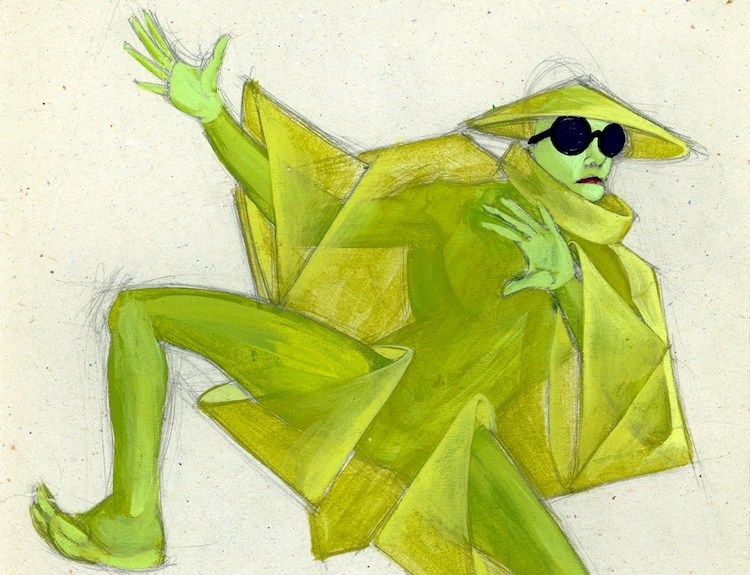As part of the Centenary Celebrations of HSH Prince Rainier III, Monte-Carlo Ballet presents Jean-Christophe Maillot’s new interpretation of George Balanchine’s L’Enfant et les Sortilèges.
The programme opens with another of Balanchine’s works, La Valse – both ballets being set to the lovely music of Maurice Ravel.
A friend of Princess Grace and Prince Rainier III, Balanchine choreographed La Valse in 1925 to a commission by Sergei Diaghilev for his Ballets Russes. The impresario rejected the work, however, regarding it as “untheatrical”. Nevertheless when Balanchine created waltzes for the Metropolitan Opera in 1934, he choreographed a ballet to music from Die Fledermaus, and finding the work too short, he preceded it with Ravel’s Valse Nobles et Sentimentales.
The ballet, of which Prince Rainier was very fond, features a number of couples waltzing in a cavernous ballroom where a woman in white is both horrified by, and attracted to, a mysterious uninvited stranger – who ultimately lures her to her death.
In 1915, Jacques Rouché, director of the Paris Opera, commissioned the French writer Colette – whose 150th anniversary is being celebrated this year – to write the text for a fairytale ballet, L’enfant et les sortilèges. Maurice Ravel was actually the third choice of composer, and as he was on active duty on the Western Front during the First World War, he didn’t receive the commission until 1917, and therefore started work on it after the War had ended. The completed work was ready for publication and production in 1925, and L’enfant et les sortilèges, with choreography by a young George Balanchine, was premiered on March 21st of that year by Opéra Monte-Carlo. It was a triumph, and the score was also a favourite of HSH Prince Rainier III. It is now one of the most beloved of French operas.
In 1992, Jean-Christophe Maillot choreographed his first version of the ballet based on the opera, following which he met HSH Prince Rainier who praised the work. Now, thirty years later, Mr Maillot has created a new version of it.
A story based on the wonder of childhood imagination, L’Enfant et les Sortilèges tells of a young boy, consigned to his bedroom for bad behaviour, who wreaks havoc with everything in his room. Falling into a deep sleep, he dreams that the objects of his rage come to life and turn against him – the armchair, the grandfather clock, the teapot and cup, the fireplace, the characters on his wallpaper and even his arithmetic homework. Out in the garden, and still in his dream, the boy exacts his revenge on the tree, a dragonfly, a frog, a bat, a nightingale, and even his pet squirrel, but after an act of mercy in which he binds up the squirrel’s paw with a ribbon, the creatures take pity on him and lead him back to the house, leaving the garden bathed in the magic of moonlight. Full of regret on waking, he turns to his mother for forgiveness.
This production, led by David Molard Soriano, Assistant Conductor of the Orchestre National de France, will feature 240 artists in all. The Monte-Carlo Ballet and the Monte-Carlo Philharmonic Orchestra will be joined by an Academy of young singers – created for this occasion by Cecilia Bartoli – and The Children’s Choir of the Rainier III Academy.
La Valse and L’Enfant et les Sortilèges will be staged in the Salle des Princes, Grimaldi Forum, from 20th to 23rd December. Tickets may be obtained from the Ballets de Monte-Carlo website.
This article first appeared in Arts Preview
Lead image by Alice Blangero; all photos courtesy Les Ballets de Monte-Carlo



Leave a Reply